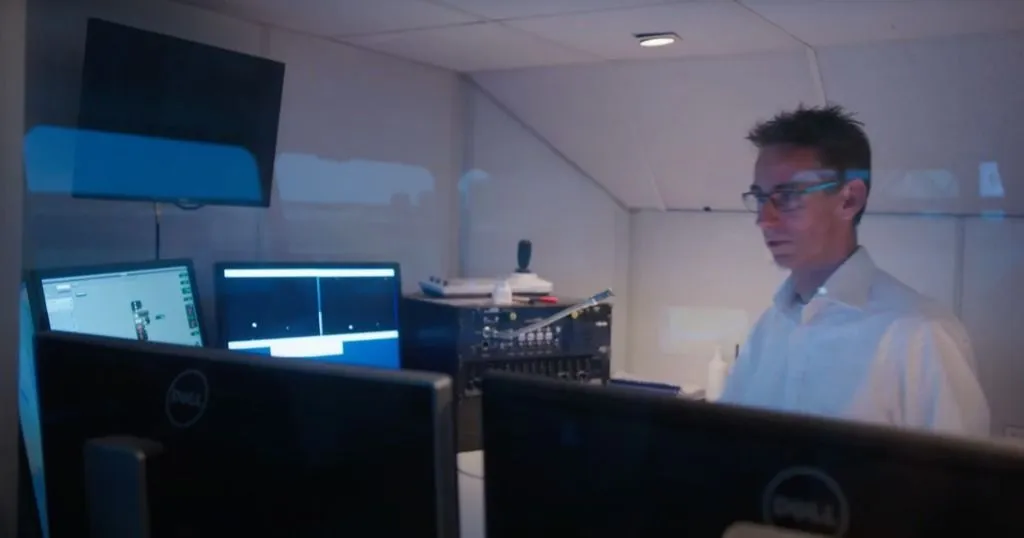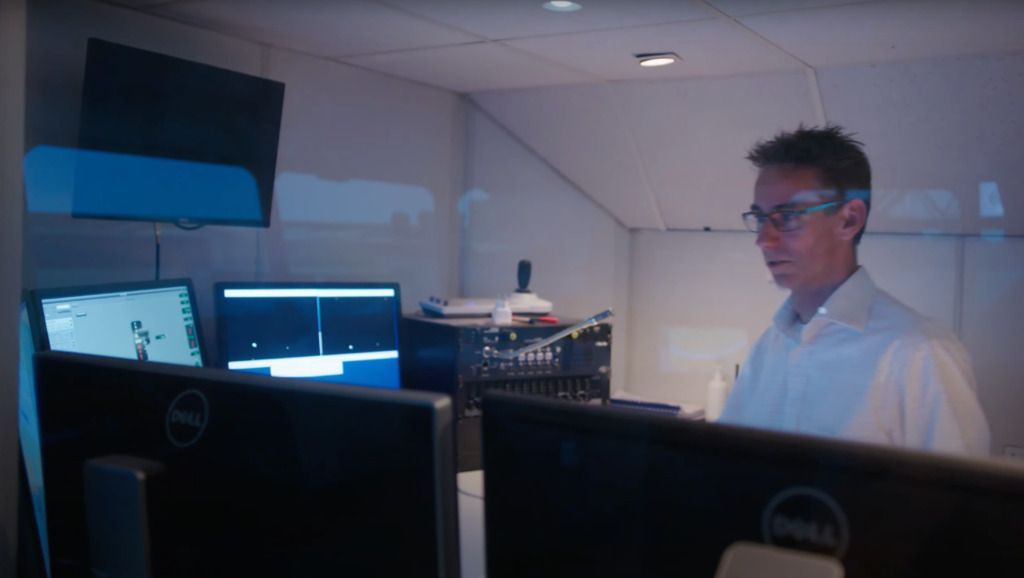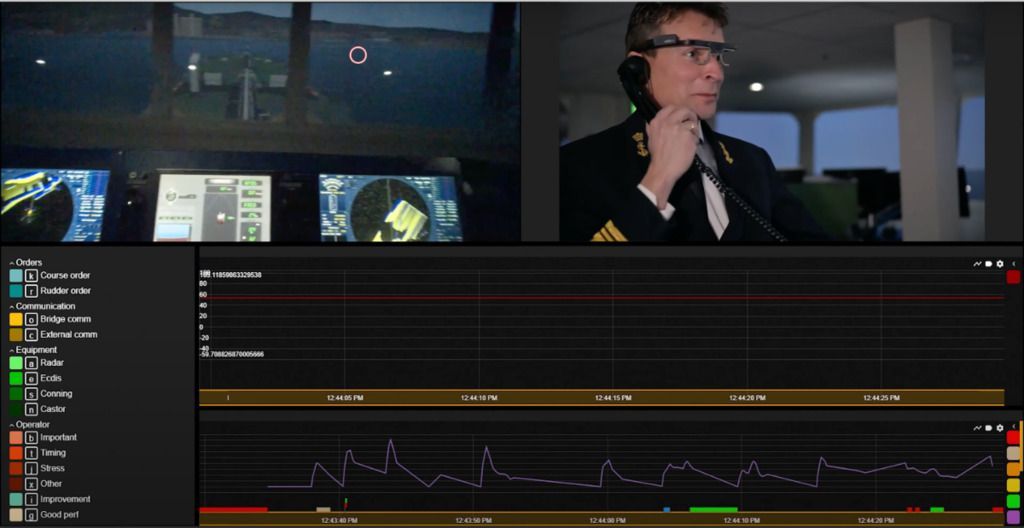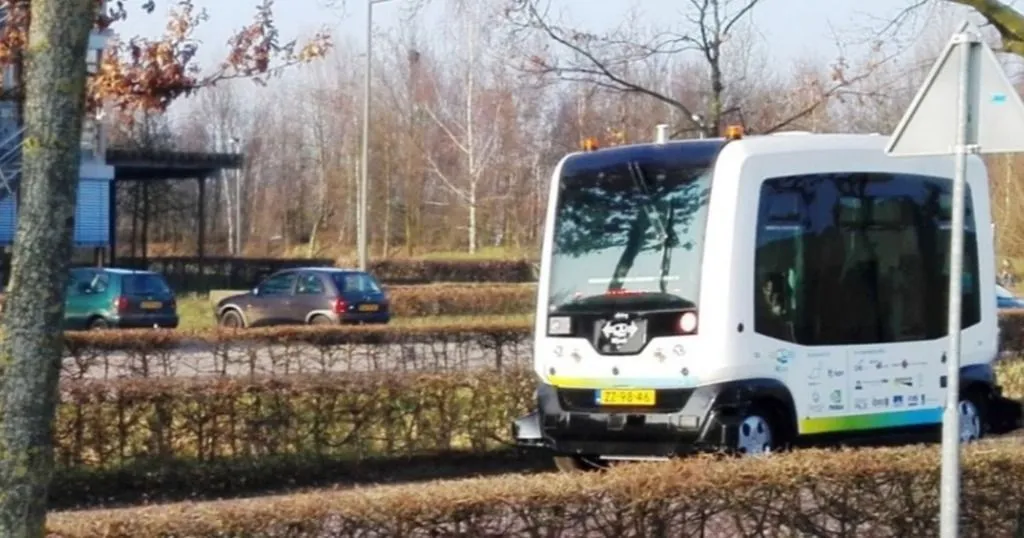Behind the scenes at MARIN: research into human decision making
One of the world's leading maritime research institutes: MARIN, took us on a tour in their ship bridge simulator. A great customer success story that highlights the importance of human factor research.
Posted by
Published on
Wed 20 Jul. 2022
Topics
| Data Integration | Human Factors | Cognitive Load | Multimodal Research | Decision-making |

Right in Noldus’ backyard in Wageningen (in the Netherlands) lies MARIN, one of the world’s leading (applied) research institutes in the maritime domain. Their history in the Dutch maritime industry dates back to 1873. And their goal is to contribute to a more sustainable use of the sea with cleaner, smarter and safer maritime structures and operations: better ships, blue oceans. Although they are mainly a commercial player in the maritime industry, their backbone is scientific research.
Thus, not surprisingly, MARIN loves to collect data. And with the help of Noldus, they have implemented a human factor research toolkit to collect hard data on the human element of all kinds of maritime operations.
What is human factor research?
Human factors (and ergonomics) are defined as the use of psychological and physiological principles in the engineering and design of goods, services and systems. The emphasis herein lies on the interaction between the person and the object (or technology) of interest. The primary objective is to decrease human error, boost productivity, and improve safety and comfort.
Operating a virtual ship to understand complex decision making
Hans Huisman is team leader human factors within MARIN, and in our latest customer success story he gives us a special tour in their largest ship bridge simulator. A ship’s crew can operate a (virtual) ship in this simulator as if it was a normal ship. A range of situations can be introduced to the crew, such as challenging weather conditions or specific navigational tasks.
This is, for one, to best prepare them for all types of scenarios, but equally as important, to monitor, track and score their behavioral response which helps to improve the understanding of the human factor involved in such complex decision-making.

Direct debriefing: performance and decision-making
Data ranging from eye movements, heart rate and other physiological parameters are recorded (and/or analyzed from a video feed), whereafter a crew can directly be debriefed on their performance. A person can think he/she acted in a proper way in a specific scenario, but are often still surprised if you show them the data afterwards on their performance and decision-making.
“Noldus has a lot of knowledge on human performance, data collection and synchronizing data sources"
Hans Huisman | MARIN, Wageningen, The Netherlands
Multimodal data
This synchronization of data is vital in multimodal research. Being able to study time relationships and synchronously play back multiple modalities, such as video, screen captures, location data, behavioral data and various physiological and psychological parameters is difficult, but a necessity.
Noldus will provide MARIN with the tools to overcome these challenges, which they will incorporate in their, currently under development, ‘seven oceans simulation center’. This will be a state-of-the-art center with 7 high tech maritime simulators, which will all include a human factors measurement toolkit. This will also be integrated with virtual reality and augmented reality technology which provides great data visualization and integration.

Not only in the sea
While the focus of MARIN is in the maritime domain, gathering data on human performance, and its visualization and integration, is also crucial in other, ‘safety critical’ domains. A great example is aviation. But also in the military, where making strategic decisions is an integral part of the job.
Take a look for yourself on MARIN’s website to learn more about their history, current projects and future perspectives and ambitions. Want to take a quick tour first? Check out the customer success story at MARIN’s headquarters here.
Want to know more about human factor research? Or multimodal data integration? Feel free to browse on our website as well.
Related Posts

Interacting with autonomous cars
